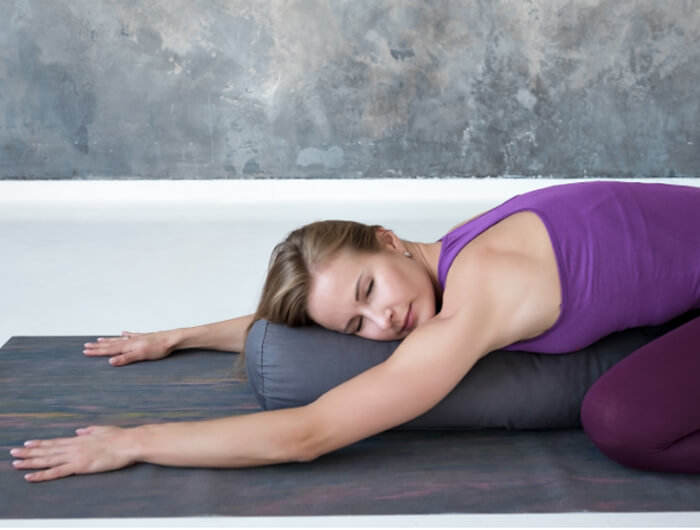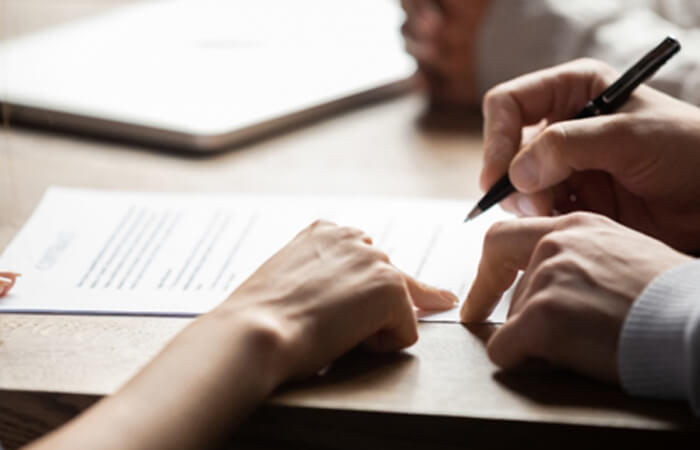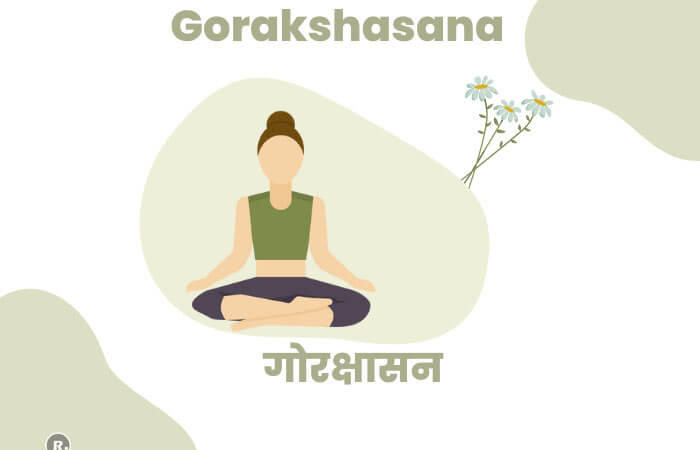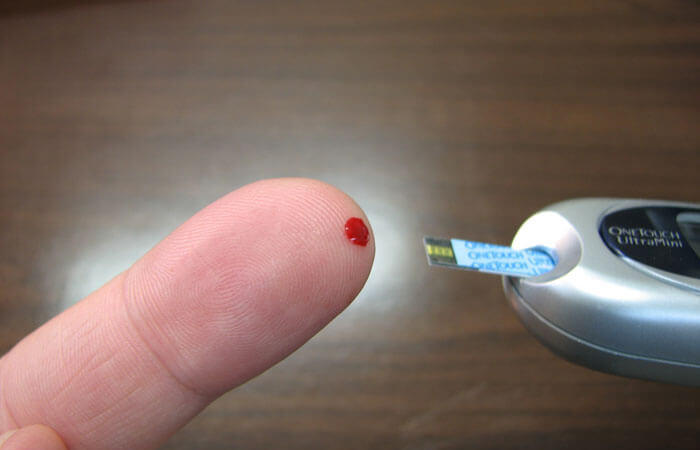What’s a Yoga Bolster, and When Should You Use One?

Yoga has been around for hundreds of years and through the ages, this practice has been adopted by countless people all over the world. Because of this, new styles and methods have been adopted over the years and the popularity of this ancient practice has absolutely exploded among health and fitness enthusiasts.
Along with the development of new subcategories within the traditional practice of yoga, comes the use of various equipment such as yoga blocks, yoga mats of varying thickness, and bolsters. Today we’ll be focusing on the use of bolsters. But first, let’s talk a little bit about the different types of yoga that exist today and the basic principles of the practice.
What is Yoga?
Many people think of yoga as just a type of exercise that involves a lot of intense stretching. While this is partly true, there is a lot more to it than that. Yoga involves not only physical discipline but mental and spiritual practices as well. Originating in ancient India, yoga is not only intended to improve physical fitness but also mental fitness. A major proponent of yoga involves learning to calm the mind.
There are many different yoga methods that have risen in popularity, but they all incorporate breath control, meditation, and specific body movements and positions held for a short time. The purpose of yoga is to promote health and relaxation, yes, but deeper than that it was created to still the mind and detach from the mundane suffering of this physical existence.
What are the Different Types of Yoga?
The general philosophy of all forms of yoga is to connect the body, mind, and spirit. There are actually six different forms of yoga. These include:
- Karma yoga
- Raja yoga
- Hatha yoga
- Tantra yoga
- Jnana yoga
- Bhakti yoga
Each of these different subcategories of yoga corresponds to a unique focus with its own set of attributes. Karma yoga is the path of spiritual liberation through service and hard work, meaning a life removed from self-serving behavior and negativity. Raja yoga incorporates meditation as well as a rigorous devotion to what’s known as the eight limbs of yoga. Hatha yoga is the physical and mental form. Tantra yoga is the practice of weaving the physical with the spiritual. It seeks to balance human instincts in order to reach enlightenment. Jnana yoga is a scholarly form and is centered around wisdom. It promotes intellectual development by way of discipline through studies. Bhakti yoga is the practice of channeling emotions in order to develop tolerance and acceptance.
Chakras
Intertwined in the practice of yoga is the belief that chakras are the center points of the mind and body. They determine how one experiences reality through our reactions to emotional situations and beliefs, our wants or dislikes, our fears in life or confidence in ourselves, as well as physical symptoms in the body.

Chakra energy can become blocked triggering an imbalance in our physical, mental, or spiritual state causing adverse symptoms such as anxiety, fatigue, and even digestive issues.
The seven major chakras include:
- Muladhara (root chakra) – Located at the base of the spine, this chakra deals with the mind and body’s connection to the earth keeping us grounded.
- Svadhishthana (sacral chakra) – Located beneath the belly button, this chakra deals with sensuality and creativity.
- Manipura (solar plexus chakra) – Located in the stomach, this chakra deals with confidence, self-discipline, and wisdom.
- Anahata (heart chakra) – Located in the center of the chest, this chakra deals with personal relationships.
- Vishuddha (throat chakra) – This chakra deals with verbal communication as well as immunity.
- Ajna (third eye chakra) – Located between the eyebrows, this chakra deals with intuition.
- Sahasrara (crown chakra) – Located on the crown of the head, this chakra deals with a spiritual connection.
Modern yoga incorporates these same principles just as the older methods do. The difference lies in what your goals are and what you’re trying to achieve. A few different types of yoga include Ashtanga yoga, Bikram yoga or hot yoga, Hatha yoga, Kripalu yoga, and Kundalini yoga among many others.
What’s a Bolster and Who Should Be Using One?
As previously mentioned, there are several types of equipment used in yoga such as a bolster. A yoga bolster is simply a large pillow (usually rectangular or circular) that is firm and quite heavy due to its density. It is used for support during certain poses that may require it for a deeper stretch. Depending on the type of yoga you choose and how advanced you are, it may be beneficial for you to use a bolster.
For example, restorative yoga poses with a bolster is a great way to relax even deeper into the poses and release muscle tension. Plus, deep muscle release can also trigger emotional release as we tend to carry various emotions in specific areas of the body. They are not required to perform most yoga poses, but they are often used in certain styles of yoga such as yin yoga and Iyengar yoga.
If you are practicing yin yoga which involves long holds as opposed to other methods of yoga that hold for just a few moments, then a bolster would be a very helpful tool as it will assist you in relaxing into the pose and getting an even deeper stretch to release tension deep in your muscles.
Conclusion
In summary, yoga has been around for a very long time and it’s not simply a way to lose weight. It is the practice of connecting the body, mind, and spirit through discipline, breathing techniques, meditation, and physical poses. There are many different types of modern yoga all stemming from the six main categories that correspond to a unique focus.
Chakras are also an integral part of the philosophy behind yoga practices and they deal with one’s experience of reality. Whatever yoga style you choose to practice, the root of its teachings will always go back to these principles. Certain yoga tools such as bolsters can be extremely helpful in achieving a deeper stretch and the release of tension in the muscles, which may then result in an emotional release as well. If you practice restorative or yin yoga, the bolster can be a wonderful tool to help you relax.
Suggested Read: What is Yoga






